Some time back, I posted about an article published in Skeptic magazine regarding religion and violence. As I gave some indication then, discussions about the topic tend to be very superficial, and in a lot of cases deal with popular misconceptions and gross misrepresentations. Yet it’s a topic that, without a doubt, deserves a significant amount of attention, and serious attention at that. I am under no illusions that I am capable of delivering this, but I do want to present a couple of salient points.
Let’s start with the first, perhaps most common, misrepresentation. No one even slightly serious about the subject believes that religion is the sole cause of violence, or makes any attempt to imply this. Not even the most devout atheist believes that a world without religion would be peaceful and mellow – despite the statistics giving some support to this idea from countries that are largely secular (and suffer from much lower counts of violent crime.)
Nor does anyone with half a brain believe that religions specifically promote violence; this is far too much of an over-generalization to be supportable or even useful. Yet the topic is dismissed from discussion very often because of exactly this fallacy. “Nobody in my church ever hurt anyone,” or, “The Crusades were a long time ago,” or, “If you think christians are bad, how about the muslims?” are examples of the kind of thinking that we see far too often. Counter examples do not automatically dismiss (or ‘balance out,’ a ridiculous concept that is seen far too often) the numerous instances of violence with strong religious ties. If we take a specific incident of violence, such as an execution, and find another factor that may be a motivation, this is a perfectly legitimate examination of the issue, and in fact this is exactly what we should be looking for, in all fairness – such things could disprove the idea of religious violence. But this is not in any way related to circumstances where religious belief avoided or thwarted violence; it’s not reasonable to reduce the possibilities to either/or propositions, nor could religion ever be shown not to be capable of both. And as I said previously, since it is widely reckoned to be a force for good, there’s really nothing that can balance out any circumstance where it is not. Such occurrences are examples of abject failure.
So we come to an argument that often appears: humans have a tendency towards violence, so human nature is at fault more than religion. And to that, I will unreservedly agree. Yet, I want to maintain a proper perspective on such a thing, because this is the same as saying that guns deserve more credit for violent deaths than clubs. While a true statement, this does not absolve clubs of their status as weapons.
Humans do, unquestionably, have tendencies towards violence – we are not alone among species in this regard, but this is no excuse. There is some internal recognition that violence is necessary in some circumstances, and I only need to mention “invading army” or “marauding wolves” to demonstrate that there is indeed some purpose. And yes, this gets displaced very often, in everything from spectator sports like football, boxing, and wrestling, to fistfights over name-calling and traffic altercations. While the actual processes that provoke such (over)reactions are not specifically known, it is not hard to imagine that they did evolve to suit some useful functions. We are not helpless victims of evolved traits, but it does help to understand why we are prone to certain behaviors – this is an important distinction.
It is also worth noting that we generally have some distaste over the idea of humans as a violent species – we’re not proud of it, but ashamed instead, and this is also an internal trait. And this also serves a purpose, because “social” and “violent” don’t really go together, and we place a lot of emphasis on cooperation and community too. In fact, we tend to see the violence we engage in as defensive, much more often than not. That’s more acceptable, isn’t it?
In light of this, the original question becomes more along the lines of, “How often does religion exploit tendencies to be violent rather than tendencies to avoid violence?” Or, lest we put the cart before the horse, does it even do this?
It’s not enough, for instance, to take violent occurrences throughout history and find other potential motivations than religion, even if it’s a good start. One must also reasonably ask, “Why then does religion appear so often in such circumstances?” While religion is not by any stretch a common denominator in violent acts throughout history, it nevertheless appears with surprising frequency – it behooves us to ask why. Yes, it is entirely possible to be a coincidence or red herring, and the very tricky reality about such things is that every act of violence may have its own individual motivations; it’s not safe to just look for some other motivation that occurs more frequently than religion, because it may not exist even if/while religion remains blameless. But if religion is prominent in such things, there is some particular reason why. We cannot take such things as the Crusades and muslim extremism and dismiss them as irrelevant when they are inextricably linked, not just by the various chroniclers, but by the participants themselves. In other words, we cannot blame the witch hunts and inquisitions on bias from historians when we have direct evidence of religious influence from the hunters and inquisitors themselves. The Malleus Maleficarum was not created after the fact as propaganda, so dismissing religious influence in witch hunts is, to say the least, far more biased than considering it.
So let’s continue with this example. Malleus is not scriptural, nor even claimed as divinely inspired, so does it count as religious? Perhaps not – it is easy to argue that the subject matter is more the reflection of personal opinions and/or agendas, or simply misinterpretations, and so it shouldn’t be considered religious. Yet the subject matter, and the authority invoked within, most certainly are religious in both origin and nature. Had the book been about finding and exterminating alien mind control (or some other ‘possession’ not related to religion,) could it possibly have achieved the status that it did? How many people would have accepted it as a guide? And the very pertinent question: how many people could flay or burn someone alive if they did not believe in the righteousness and divine authority of their acts?
This is a very important factor to examine. Context means a lot in such investigations. In our society today, we are horrified at someone who would put their child to death over, for instance, uttering, “jesus christ be damned” – but this is cultural, not religious, because scripture actually condones such acts. But how does one determine the dividing line between the influences of a culture with religious roots, and religious thought itself? While there are lines in scripture about not suffering the presence of witches, there are also lines permitting only one kind of plant in the same furrow, and not trimming facial hair. Specific splinters of faiths, local churches and/or their leaders, and communities often determine which behaviors are given more weight than others. Is that still “religion”?
Again, we can compare this to other forms of influence, such as political movements and forms of tribalism/nationalism. In the cases where any of those have led to violence, such as the purges of Native Americans, Armenians, or Bosnians, we can see the influences of class consciousness and privilege, giving support to the idea that violence is justified by the view of the victim being “lesser” than the perpetrator, or in many cases a threat – get them before they get us, because they will. In such cases, religion may be only incidental as a motivator; perhaps providing the idea that someone who follows jesus or mohammed is “good” while everyone else, by default, is not. This may be almost indistinguishable from someone who is “aryan” or not – it’s not that it motivates anyone towards violence, only that it justifies extremism by changing the definition of good. We might broaden the scope, based on such observations, and consider that ideologies might be responsible for motivating or justifying violence – again, this isn’t an either/or thing, but can be one of many factors that contribute. And of course, religion gets no free ride here because religions are ideologies themselves; the best that could be said in such circumstances is that it is unfair to single them out. Yet some ideologies are actually motivations for good behavior too, so some finer distinction needs to be made.
We cannot ignore the authority angle, though. Scripture is touted and raised as the ultimate authority, and thus not subject to common ethical or social considerations. This is an interesting approach to ethics, in that it fulfills no purpose commonly attributed to ethics, which is to serve the community by valuing fairness, mutual support, and cooperation. Instead, it only invokes the self-proclaimed authority of scripture to wield by proxy the demands of an unquestionable (yet ethereal) superior – this does not fit any accepted definition of ‘community.’ Also notable is that such authority is wielded very often only for others; not all portions of scripture receive the same weight or attention. It takes a large group of people, as in a culture, to select and agree upon which bits are the unassailable word of god, and this is frequently treated more as mob rule than abject obeisance – whoever belongs to the church with the largest number of followers gets to enforce their views on others, often regardless of what religion anyone else might follow. Note, too, that the preferred portions of scripture, or entire denominations themselves, are not arrived upon in any manner we deem rational – most religions claim divine authority as their own, so such claims are not enough to distinguish judaism from islam, and in fact religion is chosen by what suits an individual’s desires best, in those few cases where it is not simply adopted blindly from parents or community. Once chosen, how often does it become the law that all others must follow, denying their choice?
Homophobia is, quite likely, a cultural thing, especially when we see how homosexuality is treated in other cultures. But violence against gays would likely be as sporadic as violence against any other ethnic or preference group without the idea of scriptural condemnation – in other words, it’s good to hate. In any given public forum, comments about homosexuality and atheism are exponentially more likely to reference religion; this can be ignored only through blind denial. At least prejudice against atheism might be explained by believing that it’s synonymous with immorality – the idea that religion, rather than society, dictates our morals is a common fallacy. Homophobia lacks any support at all save for obscure scriptural references, which number fewer than references against wealth or gluttony (the latter, at least, makes it somewhat ironic that here in North Carolina, the Fat Fuck State, we recently passed an amendment against same-sex marriages.) Given any method of determining the detriments to society, however, homosexuality falls completely in the clear, far behind alcohol, improper traffic lane usage, and bottled water. And even, it must be said, praying for recovery from illness.
The same lack of detriment can be found in such things as abortion and birth control, education in strong sciences such as evolution, and even the definition of ‘kosher’ foods. None of these have the slightest impact on community or fairness, nor do they have victims in any way, save for the personal affront end of things which, to be blunt, is not victimhood but mere whining. Yet even in our enlightened societies we’re expected to yield to the authority claimed, and in some current cultures, failure to do so does lead to violent reprisal. When a mob attacks an embassy and kills innocent people within over the actions of a redneck nitwit thousands of kilometers away, there is no motivation that can be claimed as benefiting society, and the only ‘ethics’ at work is the self-imposed privilege of the devout. Even when hurling about demands for respect, it must be noted that no respect is offered in return. Where do such class distinctions come from, if not from religion?
We can also look at many cases of wars and persecutions throughout history that had political and national motivations behind a religious façade – Northern Ireland and the Palestinian/Israeli conflicts come to mind. In many such cases, religion is not a motivation nor really justification, but a means of promoting a cause and provoking the populace towards extremism. The same might be said for the rampant idea within this country that ‘muslim’ directly equates with ‘terrorist,’ a fallacy knowingly fostered by presidential administrations (the George W. Bush administration, in case an example was needed, but that’s not the only one.) And while seemingly unrelated, we have the frequent appearance of incarcerated criminals who have ‘found god,’ and the errant (and enormously hypocritical) preachers who have ‘repented their sins.’ All of these rely on the idea that religion has a much higher standard than mere laws, and that it is accepted and unquestioned within a populace. The ability to wield these successfully can only come about if enough people abdicate rational considerations in favor of automatic responses and associations regarding religion. Is this the fault of religions, or merely a byproduct of their acceptance?
In examining the reasoning behind religious thought as a whole, the idea that religion merely exploits numerous natural tendencies within humans seems to have merit. Religion is not so much the ideologies of individual denominations as the culmination of several traits that we developed as a species, making us more susceptible and willing to accept the premises of the specific faiths. Thus, in how many cases can we say that religion has simply ‘fit the bill’ in describing or justifying the base instincts we might have towards violence itself, or tribalism, or self-preservation? Or, ignoring for the moment any claim of divine authority, should we even consider that the goals of most religions are to strengthen and support the community, and that religion is as much a victim of our internal motivations as those who are targeted by violence?
Perhaps the most interesting observation when considering all of this is that determining just how much blame religion deserves is irrelevant. Throughout, we can see that the culprit is usually a lack of rational consideration, the failure to have distinct ideas about community and firm goals about our interactions. We too often fail to recognize bigotry or self-imposed privilege for what it is, and don’t consider what is useful in either law or ethics (or for that matter, what the purposes of ethics and morals are in the first place.) We accept labels and assumptions that simplify decisions, such as ‘christian = good,’ and never consider that good already has a simple, easy-to-wield definition. And most especially, we let ourselves be drawn in by aspects that appease our egos at the expense of others. Religion does indeed exploit these, but so do many other approaches. By concentrating solely on religion, we may be guilty of not casting the net wide enough or, worse, treating a symptom and not the cause.




















































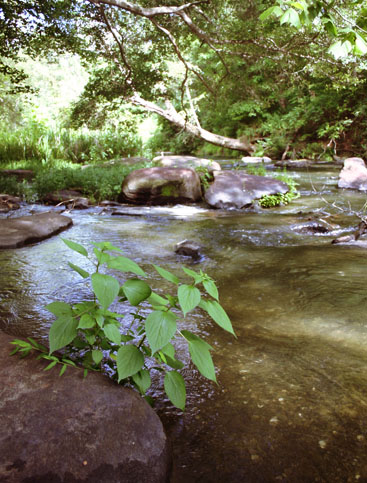 Since I had some business in Raleigh yesterday, I decided afterwards to go back to one of my old haunts, the head of the Neuse River where it spills from Falls Lake. I haven’t been back there in a while, but years ago when I started getting serious about photography, it was one of my routine shooting locations, probably helped by it being 11 kilometers (7 miles) away from where I lived at the time. Many of the first slides in my stock drawers come from there, and
Since I had some business in Raleigh yesterday, I decided afterwards to go back to one of my old haunts, the head of the Neuse River where it spills from Falls Lake. I haven’t been back there in a while, but years ago when I started getting serious about photography, it was one of my routine shooting locations, probably helped by it being 11 kilometers (7 miles) away from where I lived at the time. Many of the first slides in my stock drawers come from there, and 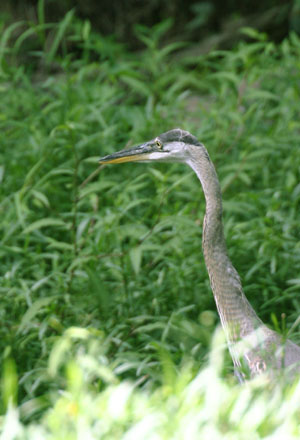 While doing this juggling, the heron watched me suspiciously and I tried to be subtle and casual. Finally, I raised the camera to my eye and… nothing. The batteries had chosen this moment to go dead. Now, I’m not that unprepared, and had a spare set – yes, I shoot routinely with the expanded grips that allow for extra batteries – but it did mean even more fumbling while my subject awaited nearby. Finally, I got my shit together and began stalking the heron. There were no trees or rocks nearby to brace against and improve my stability, so I had to wing it. Worse than that, somehow I had changed my digital settings to high-contrast, low saturation mode, which was pretty much the opposite of what conditions called for, and this is very noticeable to me since I have so many vivid slides from exactly this location. But at least the heron remained pretty mellow with my presence and wasn’t spooked by my strolling upriver for better light angles.
While doing this juggling, the heron watched me suspiciously and I tried to be subtle and casual. Finally, I raised the camera to my eye and… nothing. The batteries had chosen this moment to go dead. Now, I’m not that unprepared, and had a spare set – yes, I shoot routinely with the expanded grips that allow for extra batteries – but it did mean even more fumbling while my subject awaited nearby. Finally, I got my shit together and began stalking the heron. There were no trees or rocks nearby to brace against and improve my stability, so I had to wing it. Worse than that, somehow I had changed my digital settings to high-contrast, low saturation mode, which was pretty much the opposite of what conditions called for, and this is very noticeable to me since I have so many vivid slides from exactly this location. But at least the heron remained pretty mellow with my presence and wasn’t spooked by my strolling upriver for better light angles.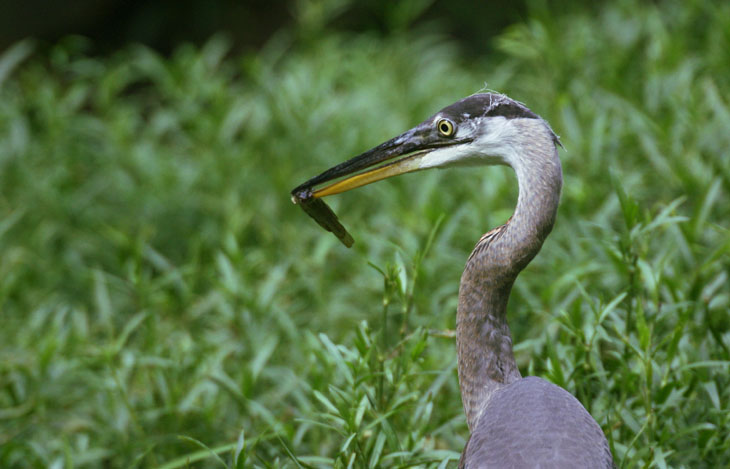
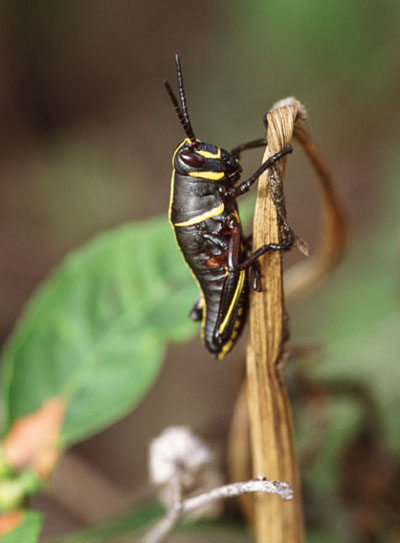 As I mentioned in the previous post, I’m in the middle of updating the galleries of the main website – don’t go rushing over there, since there’s nothing to be seen just yet; I’ll be uploading them all at once when everything’s ready. But among the changes, I’m adding more information to some of the older pics, and one of those is the image at left, of a previously unknown grasshopper found in Florida in 2000. I’d stopped alongside of Rt 41 (Tamiami Trail) in the Everglades to try and spot alligators, which I succeeded in, until they realized I was there (it took about .25 seconds) and they hurtled off the banks of the canal into the water and disappeared. As usual, I began examining the area to make sure that I wasn’t missing something else, and came across a cluster of these insects raiding a discarded soft drink cup. Some of the passing drivers might have thought I was a bit off, sprawled on my belly just off the roadside photographing weeds, but then again it was the Everglades, and it’s far from the strangest thing that takes place therein.
As I mentioned in the previous post, I’m in the middle of updating the galleries of the main website – don’t go rushing over there, since there’s nothing to be seen just yet; I’ll be uploading them all at once when everything’s ready. But among the changes, I’m adding more information to some of the older pics, and one of those is the image at left, of a previously unknown grasshopper found in Florida in 2000. I’d stopped alongside of Rt 41 (Tamiami Trail) in the Everglades to try and spot alligators, which I succeeded in, until they realized I was there (it took about .25 seconds) and they hurtled off the banks of the canal into the water and disappeared. As usual, I began examining the area to make sure that I wasn’t missing something else, and came across a cluster of these insects raiding a discarded soft drink cup. Some of the passing drivers might have thought I was a bit off, sprawled on my belly just off the roadside photographing weeds, but then again it was the Everglades, and it’s far from the strangest thing that takes place therein.


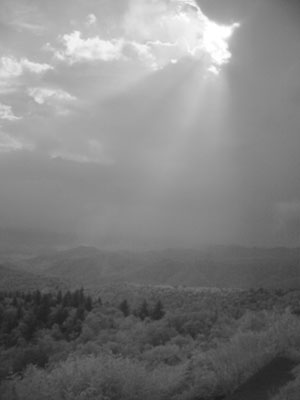 Taking a look at the source, however, we find that the word appeared not, as we might have expected, at about the same time as scriptural references to what we routinely consider supernatural, such as deities and demons and so on, but in the early 1500s. Curiously, this is when the period that we call the scientific revolution began, where the process of testing assumptions and demonstrating ‘natural’ laws gained great acceptance and proved to be more useful than appealing to priests. It is also the time when Europeans began to have significant contact with other cultures and found that there were a lot more origin stories than their own. Before this time, it was simply assumed that the judeo-christian scriptures were accurate portrayals of past history – there was nothing to be supernatural since everything was god’s plan. Even well before this period, when there were beliefs in multiple gods among the cultures that sprang from the Middle East, everything was still ‘created,’ even though the debate raged over which deity actually received credit. For the most part, people heard stories of distant lands but had direct experience only with their own villages, so the lack of miraculous occurrences meant little – they were probably taking place the next town over. Even today, with our instantaneous communications and abilities to check stories, we still have thousands of false claims bouncing around (mostly about Barack Obama’s parentage and policies) – it’s fatuous to think that no such stories were promoted centuries ago, and in fact, the folklore abounds with religious miracles and direct encounters with demons.
Taking a look at the source, however, we find that the word appeared not, as we might have expected, at about the same time as scriptural references to what we routinely consider supernatural, such as deities and demons and so on, but in the early 1500s. Curiously, this is when the period that we call the scientific revolution began, where the process of testing assumptions and demonstrating ‘natural’ laws gained great acceptance and proved to be more useful than appealing to priests. It is also the time when Europeans began to have significant contact with other cultures and found that there were a lot more origin stories than their own. Before this time, it was simply assumed that the judeo-christian scriptures were accurate portrayals of past history – there was nothing to be supernatural since everything was god’s plan. Even well before this period, when there were beliefs in multiple gods among the cultures that sprang from the Middle East, everything was still ‘created,’ even though the debate raged over which deity actually received credit. For the most part, people heard stories of distant lands but had direct experience only with their own villages, so the lack of miraculous occurrences meant little – they were probably taking place the next town over. Even today, with our instantaneous communications and abilities to check stories, we still have thousands of false claims bouncing around (mostly about Barack Obama’s parentage and policies) – it’s fatuous to think that no such stories were promoted centuries ago, and in fact, the folklore abounds with religious miracles and direct encounters with demons. … if you thought this was an ant. That’s really the whole idea.
… if you thought this was an ant. That’s really the whole idea.
 That’s a better view above, with another telltale, if you can get a close enough look. Ants, like the one at left, have a separate head on an articulated neck, while spiders have a combined head and torso called a cephalothorax, a great word to drop at parties. Plus those eyes are very indicative of jumping spiders – in fact, the eye layout is one way in which arachnologists tell the classes of spiders apart. But you’re probably more likely to be seeing such a critter from directly overhead, which means the eyes won’t be visible. So, another trait that may help is seeing the activity of the pedipalps, the extra little ‘legs’ that spiders have alongside their chelicerae (fangs.) These are often used to feel their way and can be seen drumming busily as the spider ventures onwards.
That’s a better view above, with another telltale, if you can get a close enough look. Ants, like the one at left, have a separate head on an articulated neck, while spiders have a combined head and torso called a cephalothorax, a great word to drop at parties. Plus those eyes are very indicative of jumping spiders – in fact, the eye layout is one way in which arachnologists tell the classes of spiders apart. But you’re probably more likely to be seeing such a critter from directly overhead, which means the eyes won’t be visible. So, another trait that may help is seeing the activity of the pedipalps, the extra little ‘legs’ that spiders have alongside their chelicerae (fangs.) These are often used to feel their way and can be seen drumming busily as the spider ventures onwards. Yep, just a small cup of water, and something to hold a natural plant or branch upright in the center – I’ve used a couple of alligator clips here. The range that the arthropod can move is very limited, with few places to hide, and the water prevents an escape, or at least a quick one. The cup can even be moved for a better background, or rotated to take advantage of lighting conditions (as well as keeping your subject facing the camera.) Just keep leaves and branches away from the edges to help prevent escapes. By limiting the range and options of your subject, you can obtain better shots in a shorter period of time, and not tear your hair out in frustration unless you really want to (far be it from me.) This is hardly innovative, but sometimes it’s the simple things that make your tasks much easier.
Yep, just a small cup of water, and something to hold a natural plant or branch upright in the center – I’ve used a couple of alligator clips here. The range that the arthropod can move is very limited, with few places to hide, and the water prevents an escape, or at least a quick one. The cup can even be moved for a better background, or rotated to take advantage of lighting conditions (as well as keeping your subject facing the camera.) Just keep leaves and branches away from the edges to help prevent escapes. By limiting the range and options of your subject, you can obtain better shots in a shorter period of time, and not tear your hair out in frustration unless you really want to (far be it from me.) This is hardly innovative, but sometimes it’s the simple things that make your tasks much easier. I’ll leave you with one last image, simply because I love the color cast in the eyes. The pedipalps are plainly visible here as the innermost ‘legs,’ but note the motion blur of the one midleg, which occurred despite the 1/200 second shutter speed I was using. Quick little bugger – which means you now know why I wanted to limit its movement. Overall length was perhaps 6mm – it didn’t seem inclined to hold still long enough for me to slide a scale alongside. When I figure out how to accomplish that more dependably, I’ll pass that along too.
I’ll leave you with one last image, simply because I love the color cast in the eyes. The pedipalps are plainly visible here as the innermost ‘legs,’ but note the motion blur of the one midleg, which occurred despite the 1/200 second shutter speed I was using. Quick little bugger – which means you now know why I wanted to limit its movement. Overall length was perhaps 6mm – it didn’t seem inclined to hold still long enough for me to slide a scale alongside. When I figure out how to accomplish that more dependably, I’ll pass that along too.

